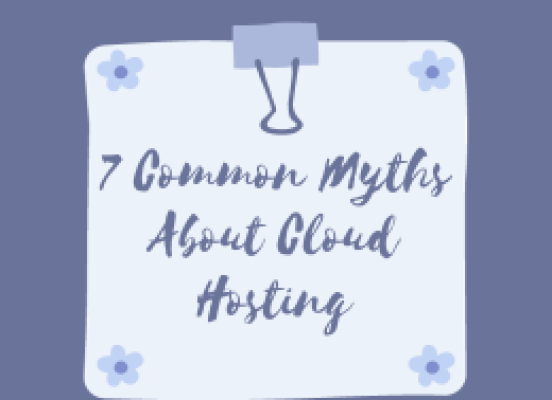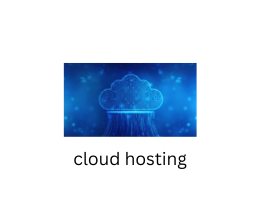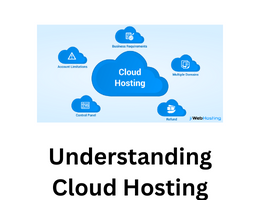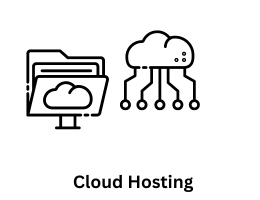
7 Common Cloud Hosting Myths Debunked: Unveiling the Truth Behind Cloud Hosting Services.
- By admin --
- Friday, 20 Oct, 2023
Cloud hosting has transformed the landscape of modern IT infrastructure. Its flexible, scalable, and cost-effective nature has made it a staple for businesses and individuals alike. Despite its widespread adoption, numerous misconceptions about cloud hosting persist, leading to misunderstandings and even reluctance to migrate to the cloud. It is essential to dispel these myths and provide clarity to businesses seeking to leverage the full potential of cloud hosting. By separating fact from fiction, businesses can make informed decisions about their IT infrastructure.
Myth 1: Cloud Hosting is Always More Expensive Than On-Premises Infrastructure
One of the most persistent myths about cloud hosting is that it is always more expensive than maintaining an on-premises infrastructure. This belief often stems from the misconception that the recurring subscription costs of cloud services will eventually surpass the one-time purchase cost of hardware for on-premises infrastructure. However, this comparison fails to account for various factors, including maintenance, upgrade, and scalability costs associated with on-premises setups.
In reality, cloud hosting offers a pay-as-you-go model, allowing businesses to pay only for the resources they use. This provides a significant cost advantage, particularly for businesses with fluctuating workloads, as they can easily scale their resources up or down as needed. Additionally, the cloud eliminates the need for large upfront investments in hardware, software, and maintenance, making it an attractive option for businesses of all sizes.
Myth 2: Cloud Hosting is Less Secure Than On-Premises Infrastructure
Security concerns often dissuade businesses from migrating to the cloud. However, reputable cloud service providers offer robust security measures and compliance certifications to ensure the safety of their customers' data. These security protocols include data encryption, regular security audits, access controls, and compliance with industry standards.
Furthermore, cloud providers often have dedicated security teams that monitor and manage security risks 24/7. They also provide data redundancy and disaster recovery options that are often superior to what many on-premises setups can provide. Ultimately, the security of data in the cloud depends on the implementation of best practices and adherence to security protocols, rather than the location of the infrastructure.
Myth 3: Cloud Hosting is Only Suitable for Large Enterprises
Some small and medium-sized businesses believe that cloud hosting is exclusively for large enterprises with complex IT requirements. However, cloud services are designed to be scalable and customizable, making them accessible and beneficial for businesses of all sizes. Small businesses can take advantage of the flexibility and cost-effectiveness of the cloud without having to invest in extensive IT infrastructure.
Cloud hosting also provides small businesses with access to enterprise-level tools and technologies, enabling them to compete more effectively in their respective markets. Additionally, the scalability of cloud hosting allows small businesses to expand their operations without the need for significant capital investments, providing a level playing field in the competitive business landscape.
Myth 4: Cloud Hosting is Always Reliable and Downtime-Free
While cloud hosting offers high reliability and uptime, no system is entirely immune to downtime. Cloud service providers invest heavily in infrastructure redundancy and failover mechanisms to minimize downtime. However, occasional outages can still occur due to various factors, including hardware failures, software bugs, or external attacks.
It is crucial for businesses to select a reliable cloud service provider with a proven track record of uptime and a robust disaster recovery plan. Additionally, businesses should implement their own redundancy measures, such as data backups and failover systems, to mitigate the impact of any potential downtime.
Myth 5: Migrating to the Cloud is a Simple and Seamless Process
Another prevalent misconception is that migrating to the cloud is a simple and seamless process. In reality, cloud migration can be complex, requiring careful planning, execution, and monitoring to ensure a smooth transition. Businesses need to assess their existing infrastructure, data, applications, and security requirements before initiating the migration process.
A comprehensive migration strategy that includes risk assessment, data security measures, and contingency plans is essential for a successful transition. Additionally, businesses should provide adequate training for their employees to familiarize them with the new cloud-based workflows and tools. Proper planning and collaboration with experienced cloud migration specialists can significantly streamline the migration process and minimize potential disruptions to business operations.
Myth 6: Cloud Hosting Eliminates the Need for IT Management and Support
Some businesses assume that by migrating to the cloud, they can entirely eliminate the need for IT management and support. However, while cloud service providers handle the infrastructure maintenance, businesses are still responsible for managing their applications, data, and user access.
Proactive management of cloud resources, monitoring of performance, and regular updates are essential to ensure the efficient operation of cloud-hosted applications. Businesses should also have a comprehensive understanding of the shared responsibility model in the cloud, which delineates the responsibilities of the cloud service provider and the customer in terms of security and management.
Myth 7: All Cloud Service Providers Offer the Same Services and Quality
Not all cloud service providers are the same, and they often offer varying levels of services, features, and quality. Businesses should conduct thorough research to identify a reputable cloud service provider that aligns with their specific requirements and objectives. Factors such as data center locations, service-level agreements (SLAs), security measures, customer support, and pricing should be carefully evaluated before selecting a cloud provider.
Furthermore, businesses should consider the scalability, performance, and compatibility of the cloud services offered by different providers to ensure that they can effectively meet their current and future needs. By selecting a reliable and suitable cloud service provider, businesses can optimize their operations and fully leverage the benefits of cloud hosting.
Conclusion
Dispelling these common myths about cloud hosting is crucial for businesses to make informed decisions about their IT infrastructure. By understanding the true capabilities and limitations of cloud hosting, businesses can harness its benefits to drive innovation, scalability, and cost-efficiency. With proper planning, security measures, and collaboration with reputable cloud service providers, businesses can successfully leverage the cloud to achieve their strategic objectives and stay competitive in the dynamic business landscape.





